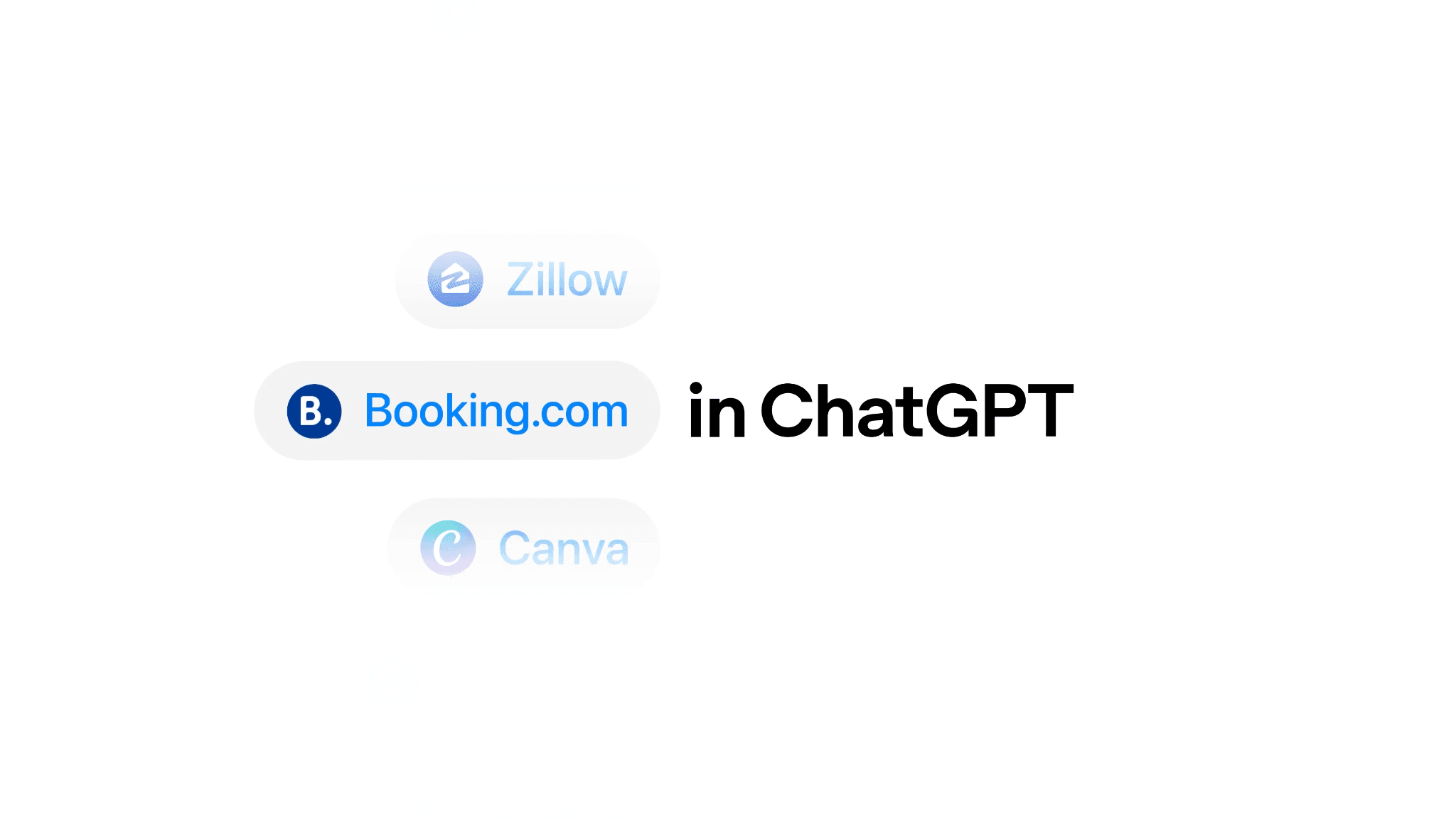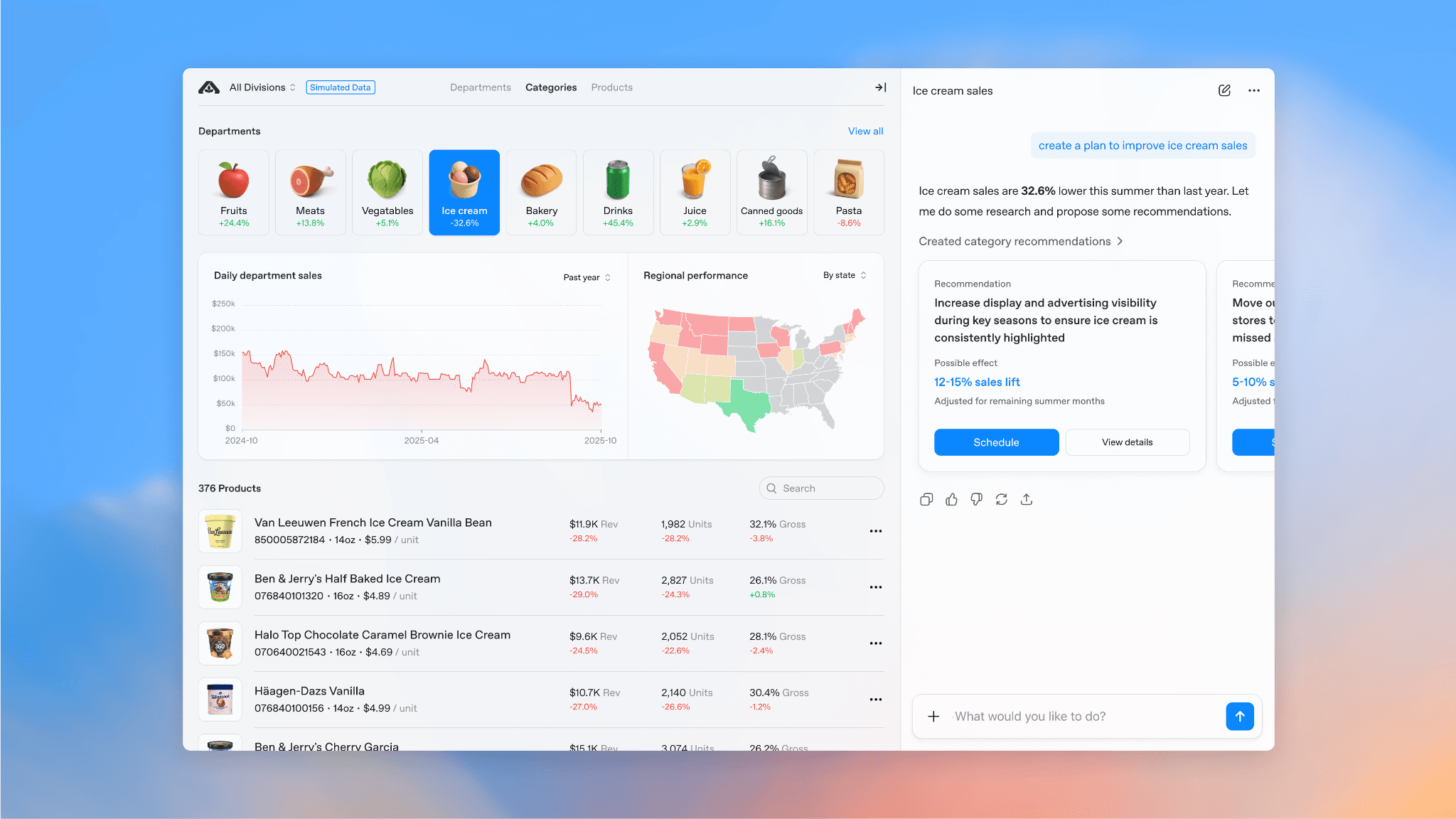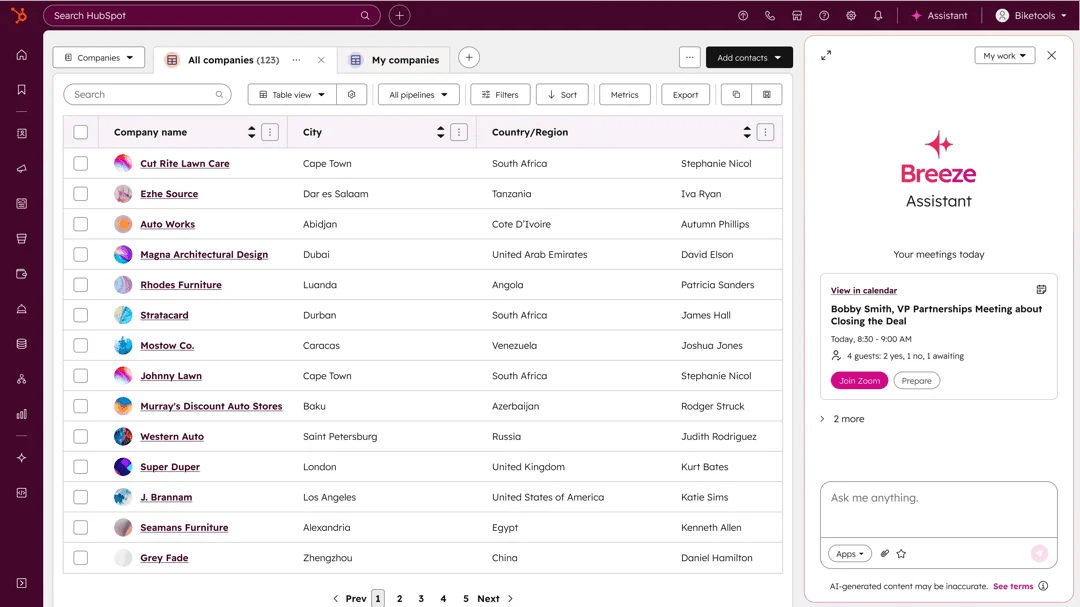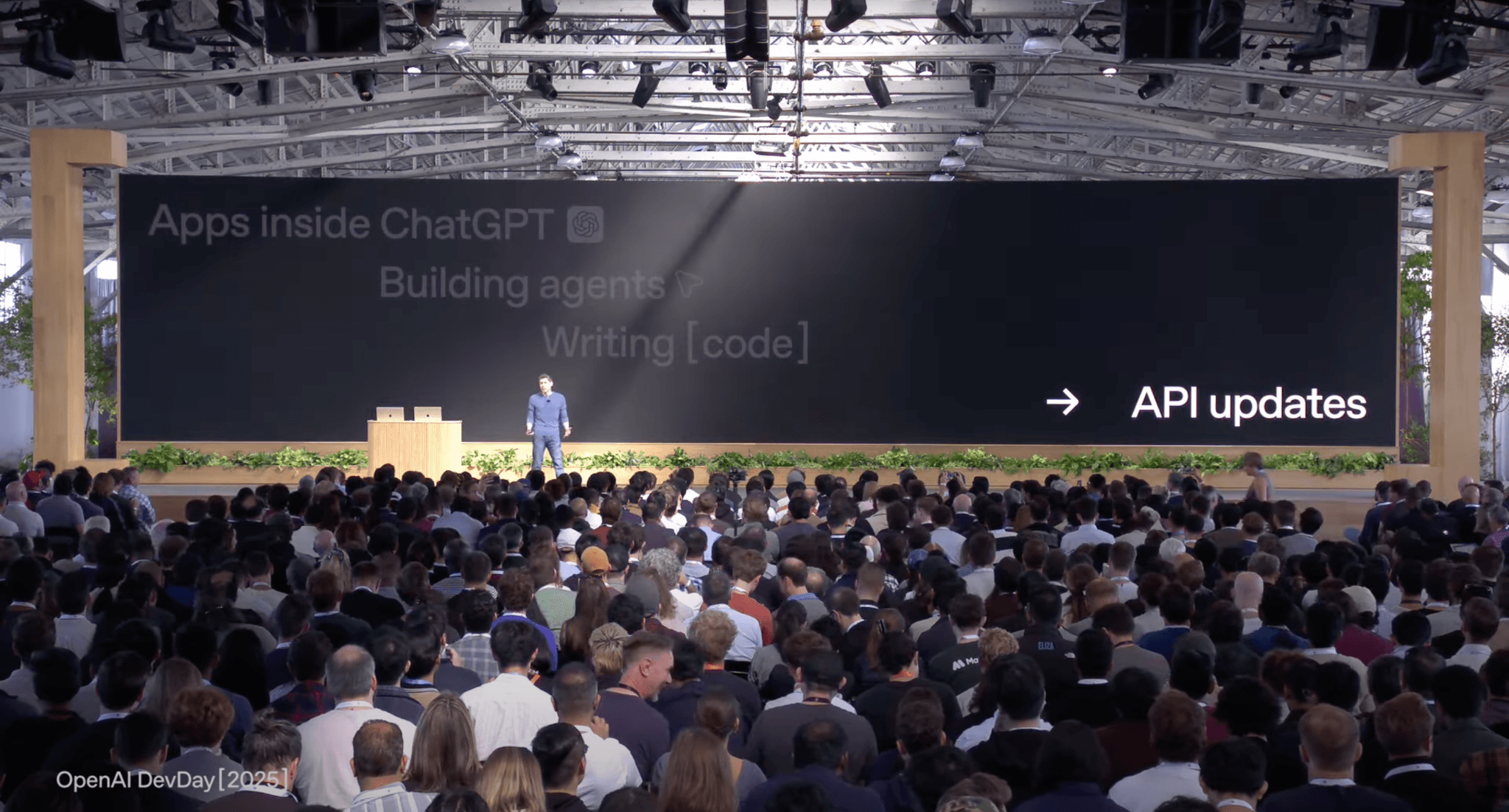OpenAI recently held its annual developer event in San Francisco, and the announcements could change how people interact with AI. The company revealed new tools that make building with artificial intelligence simpler than ever before.
Sam Altman and his team showed several updates that caught everyone's attention. These include new features in Codex, new systems that can handle tasks on their own, and tools for making videos. The changes affect not just developers but anyone who wants to build something with AI.
What makes this event different is how accessible these tools have become. The barriers between having an idea and building it are getting smaller.
Let's get into it.
Executive Summary
OpenAI announced four major updates at DevDay 2025. The Apps SDK now lets developers create tools that work directly inside ChatGPT, reaching over 800 million weekly users. Agent Kit simplifies building AI systems that can complete tasks independently through three components: Agent Builder for visual design, Chat Kit for ready-made interfaces, and testing tools for performance tracking.
Codex received significant improvements with the new GPT-5 Codex model. The tool now writes code through natural language commands and works across multiple platforms. OpenAI engineers using Codex complete 70% more work each week.
New AI models became available through the API. GPT-5 Pro handles complex tasks in finance, healthcare, and legal fields. Realtime Mini adds voice capabilities to applications. Sora 2 API is released that can create videos with synchronized sound from text descriptions or images. Developers can control video length, aspect ratio, and resolution.
What Happened at OpenAI's Big Event
OpenAI held DevDay 2025 in San Francisco, where the company started. The event focused on making AI easier to use for developers and showing new tools for building applications.
Sam Altman, OpenAI's CEO, shared how much the platform has grown. Almost two years ago at the first DevDay, the company had 2 million developers building with their tools each week.
Today, that number reached 4 million developers. ChatGPT users grew from 100 million weekly users to over 800 million. The API now processes over 6 billion tokens per minute, compared to 300 million in 2023.
Growth numbers show:
- Developer count doubled
- User base increased eight times
- API usage grew twenty times
- AI moved from experimental to everyday use
The event announced four major updates. These included apps inside ChatGPT, Agent Kit for building AI helpers, improvements to Codex for writing code, and new AI models. Each announcement aimed to remove barriers that slow down developers.
DevDay 2025 showed that AI is becoming a standard tool for building software. More people can now create applications without deep technical knowledge. The event highlighted a shift where having good ideas matters more than knowing how to code everything yourself.
Building Apps Inside ChatGPT - A New Way to Use AI
OpenAI introduced a new feature that allows developers to build apps directly inside ChatGPT. This means users can now access different tools and services without leaving their chat conversation.
OpenAI launched the Apps SDK, which gives developers everything they need to create these apps. Developers can connect their data, add actions, and design interfaces that work inside ChatGPT. The system is built on a standard called MCP, giving developers full control over how their apps work.
Key features of apps in ChatGPT:
- Apps appear directly in the chat interface
- Users can interact with tools while talking to ChatGPT
- Apps can see what users are doing and respond based on context
- Developers can reach hundreds of millions of ChatGPT users
Several companies demonstrated their apps at the event. Coursera has been shown how users can learn new topics through video content. Canva displayed how to create posters and presentations. Figma demonstrated turning sketches into diagrams. Zillow presented a way to search for homes.
Users can find apps by asking for them by name or ChatGPT will suggest relevant apps during conversations. A directory will be added later for easier browsing.
Making Money from ChatGPT Apps

OpenAI plans to offer several ways for developers to earn money from their apps built inside ChatGPT. The company is working on different payment systems to help developers generate income from their work.
Developers can already connect their existing subscription services to ChatGPT apps. If someone has a paid account with a service, they can log in directly from the chat conversation. This allows developers to serve their current paying customers through the ChatGPT platform.
Planned monetization features:
- Multiple payment methods for developers
- A new commerce system for instant purchases inside ChatGPT
- Support for existing subscription models
- Direct checkout without leaving the conversation
OpenAI announced a new system called Agentic commerce protocol. This feature will let users make purchases directly inside ChatGPT without switching to another website or app.
The company stated it will share more details about payment options soon. Developers will be able to submit their apps for review and publication later this year. Apps that meet quality standards will get more visibility in the app directory and conversation suggestions.
Agent Kit - Building AI Helpers Made Easier
AI agents are software programs that can complete tasks on their own. They use tools, understand context, and work through problems without constant guidance. These agents represent a shift from AI that answers questions to AI that takes action.
Before Agent Kit, developers struggled to build agents. The process involved many complex steps like connecting tools, testing performance, and creating interfaces. Each layer added difficulty, and many developers did not know where to start. Most agents never made it to actual use despite the excitement around them.
OpenAI launched Agent Kit to solve these problems. It provides everything needed to build, launch, and improve AI agents with less effort.
The three main components of Agent Kit:
- Agent Builder acts as a visual workspace where developers design agent workflows. Instead of writing complex code from scratch, developers can arrange steps visually and test how agents work. The system runs on the Responses API that many developers already know.
- Chat Kit offers a ready-made chat interface that developers can add to their own apps. Developers can customize the appearance with their own branding and design. The chat interface works across different agent steps and connects to various tools.
- Testing tools help measure how well agents perform. These include features that track agent decisions step by step, check individual parts of the agent, and improve prompts automatically. Developers can even test agents using different AI models directly from the OpenAI platform.
Real Companies Using Agent Kit

Several companies have already started using Agent Kit to build AI agents for their businesses. Albertsons operates over 2,000 grocery stores across the United States. Store managers need to make many decisions about products, promotions, and displays. The company built an agent using Agent Kit to help with these choices.
When ice cream sales dropped by 32%, staff could ask the agent what happened. The agent examined sales patterns, seasonal trends, and other factors to provide recommendations.
Benefits shown by Albertsons:
- Quick analysis of sales problems
- Recommendations based on multiple data sources
- Faster decision-making for store managers

HubSpot created an AI tool called Breeze using Agent Kit. The tool helps businesses answer customer questions by searching company information and providing detailed responses. When customers ask about products, Breeze finds relevant policies and solutions from the knowledge base.
Codex - The AI That Writes Computer Code
Codex is OpenAI's software engineering agent that helps developers write code faster. It works as a partner that understands what developers need and assists them throughout the coding process. The tool operates across different environments including code editors, terminals, GitHub, and cloud platforms.
OpenAI released several major improvements to Codex. The system now runs on GPT-5 Codex, a model specifically trained for coding tasks. This model performs better at code review and refactoring work. It can adjust how long it thinks based on task difficulty.
Performance improvements for developers:
- OpenAI engineers complete 70% more pull requests each week
- Almost all new code at OpenAI is written by Codex users
- Daily usage increased 10 times since August
- The model has processed over 40 trillion tokens
Codex moved from research preview to general availability. The tool can now handle complex projects and work for extended periods without supervision. Nearly every code review at OpenAI goes through Codex.
New team features:
- Slack integration allows developers to ask Codex questions directly in team chats
- Codex SDK lets teams automate workflows and extend functionality
- Admin tools provide environment controls and monitoring
- Analytics dashboards help track team usage and performance
Companies like Cisco have deployed Codex across their engineering teams. They report 50% faster code reviews and reduced project timelines from weeks to days.
Amazing Live Demo - Building Without Writing Code
OpenAI demonstrated Codex building a complete software system without anyone writing code by hand. The demonstration showed how developers can use natural language to create functional applications.
The presenter started by asking Codex to create a control panel for a Sony camera mounted above the stage. Codex figured out the camera used a protocol called Visca and built a complete control system.
The tool created a server, determined the correct data packets to send, and built an interface with all the necessary code. This entire process took about 13 minutes.
Key moments from the demonstration:
- Camera Control: Codex built a working camera interface that displayed live video feed and control buttons. The system responded to commands and adjusted the camera view in real time.
- Xbox Controller Integration: The presenter asked Codex to connect an Xbox controller to control the camera. Codex created a plan, explored files, and wired up the gamepad controls. It even decided which buttons should perform which actions without specific instructions.
- Voice and Lighting Control: Codex integrated voice capabilities and connected to the venue's lighting system. Through conversation, the presenter controlled the stage lights, asked the system to greet the audience, and created colorful light effects.
- Real-Time Code Changes: Using the Codex SDK, the presenter requested a credits overlay through voice commands. Codex modified the application code instantly while it was running.
New AI Models and APIs Now Available

OpenAI announced that GPT-5 Pro is now available through the API for all developers. This model is the most intelligent system OpenAI has released.
GPT-5 Pro works well for tasks that need high accuracy and deep reasoning. The model handles difficult work in fields like finance, legal services, and healthcare. Developers can use it when their applications require careful analysis and precise answers.
OpenAI also released GPT Realtime Mini, an advanced voice model for developers. This system brings natural speech capabilities to applications. The voice quality matches the consumer version released earlier, and it is 70% cheaper than their previous model.
Sora 2 is now available in preview through the API. This video creation model generates high-quality videos with synchronized sound. Developers can control video length, aspect ratio, and resolution. The model pairs visuals with audio including speech, background sounds, and sound effects. Users can upload images and change them into videos or create concepts from text descriptions.
Mattel partnered with OpenAI to test Sora 2 for toy design. Their designers start with sketches and turn them into visual concepts that teams can review and discuss. This process speeds up product development significantly.
Video creation helps businesses show ideas faster without expensive production work. Companies can create marketing content, product demonstrations, and concept presentations using AI instead of traditional filming methods.
What This All Means for Regular People
The announcements at DevDay 2025 show how AI is changing what people can build. Tasks that once took months now happen in minutes with the help of these tools.
Previously, creating software required coding skills, large teams, and significant time. Now, anyone with an idea can build applications using AI assistance. Codex writes the code, agents handle complex tasks, and tools like Sora 2 create videos without filming equipment.
Changes for everyday users:
- Building apps no longer requires programming knowledge
- Small ideas can turn into working products quickly
- Individual creators can compete with larger teams
- Access to professional tools through simple conversations
OpenAI shared stories of people already using these capabilities. An 89-year-old person built iPhone apps. Medical students created training tools. Museums developed interactive experiences. These examples show that technical barriers are disappearing.
The shift means more people can bring their ideas to life. Creative thinking becomes more valuable than technical skills. AI handles the complex technical work while users focus on solving problems and building useful products.
![Best AI Tools for COOs Managing Confidential Data & Operations [2026 Study]](https://assets.superblog.ai/site_cuid_cl495vqej08071jpawt8inf39/images/a-flat-vector-style-illustration-featurityjvm9kas5m25jbi7ok94a4-05p3k-tlu196gydhjlxg-1765379846137-compressed.png)
![12 Best AI Tools for CHROs: Automate Recruiting, Engagement & Analytics [2026 GUIDE]](https://assets.superblog.ai/site_cuid_cl495vqej08071jpawt8inf39/images/a-flat-colorful-illustration-of-a-profes3lg5dahs6e50g19rranfgbgiidh3jswuudan2altv9q-1765378364310-compressed.png)
![Best AI Project Management Software: 12 Tools Compared [2026 Guide]](https://assets.superblog.ai/site_cuid_cl495vqej08071jpawt8inf39/images/a-flat-colorful-illustration-featuring-a0ert4ownqhingorc2ibulgh-nv7vuys0gndyrmzirruq-1764778736290-compressed.png)